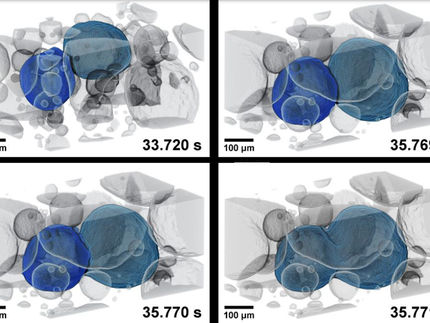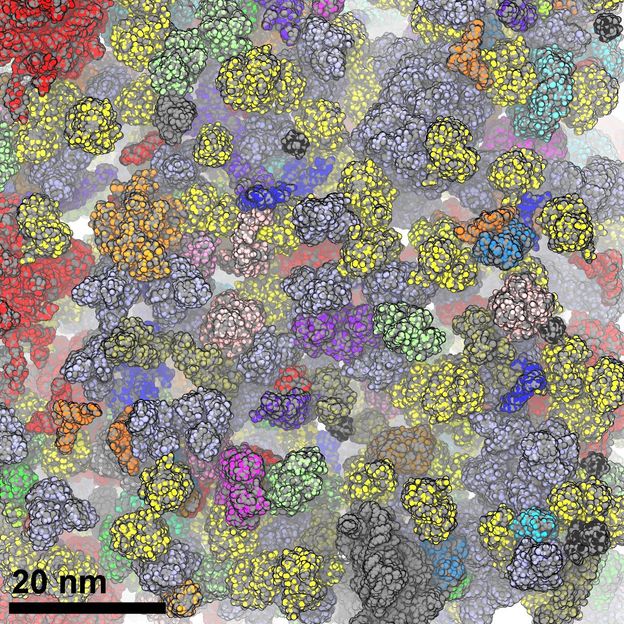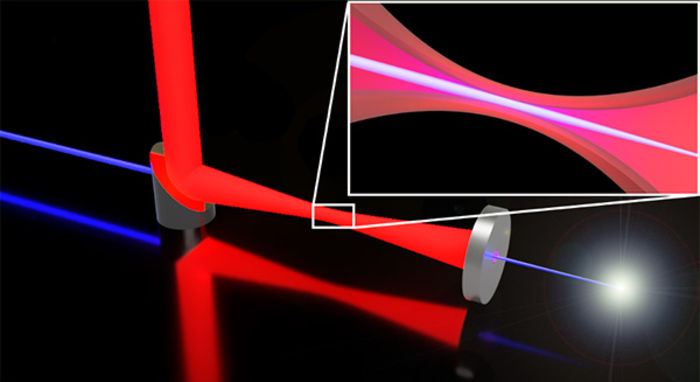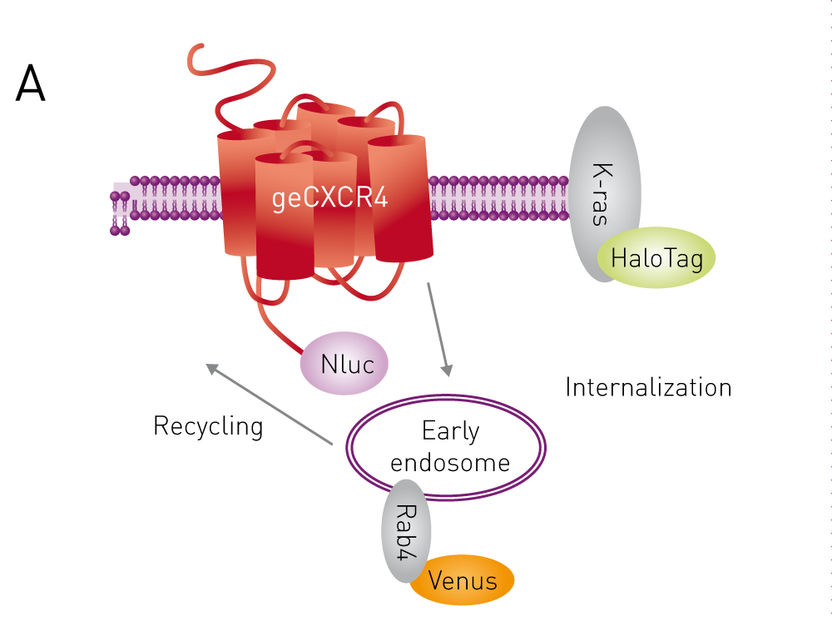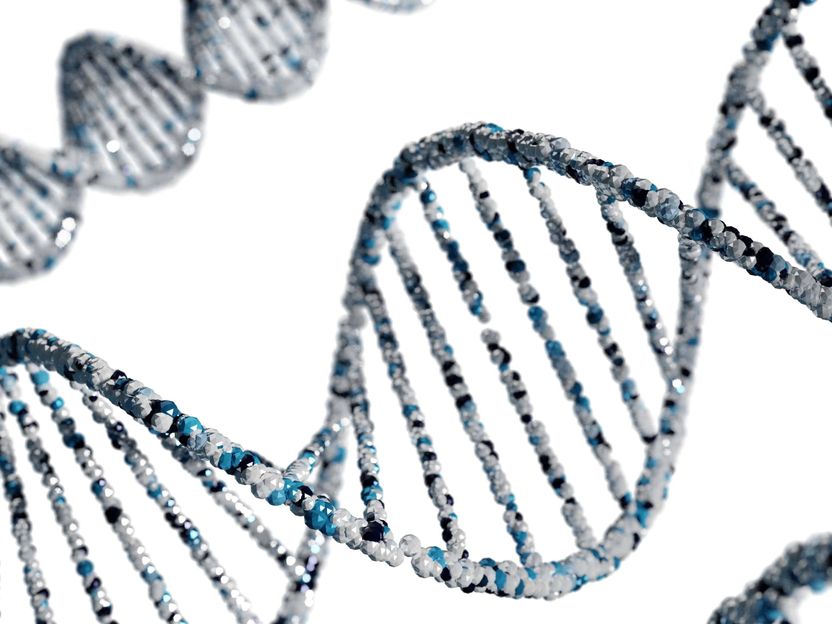New toolbox for the nanooptics allows the theoretical description to the highest accurate level possible
Physicist demonstrates the dynamics of electron-light interaction originating from first principle
With the highest possible spatial resolution of less than a millionth of a millimetre, electron microscopes make it possible to study the properties of materials at the atomic level and thus demonstrate the realm of quantum mechanics. Quantum-physical fundamentals can be studied particularly well by the interactions between electrons and photons. Excited with laser light, for example, the energy, mass or velocity of the electrons changes.
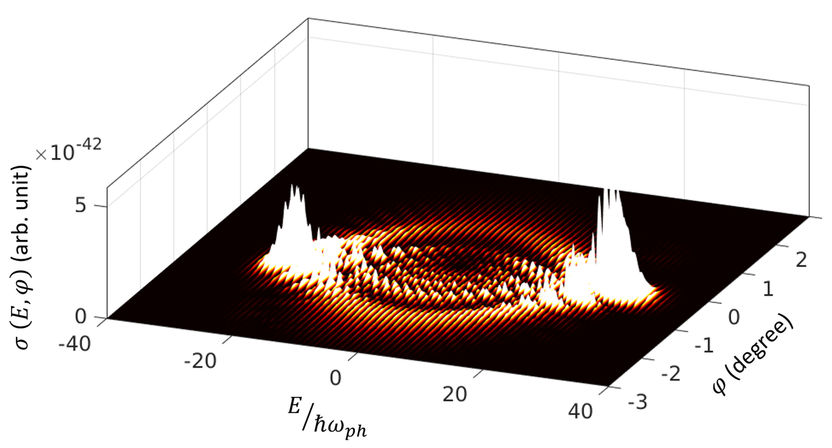
Energy and angle-resolved electron energy-gain map demonstrating a pronounced diffraction pattern.
© Nahid Talebi
Professor Nahid Talebi from the Institute for Experimental and Applied Physics at Kiel University has invented a new toolbox to extend the theoretical description of electron-light interactions to the highest accurate level possible. She has combined Maxwell and Schrödinger equations in a time-dependent loop to fully simulate the interactions from first principles. Talebi’s simulation allows it for the first time to describe ultra-fast processes precisely in theory and to map them in real-time without using adiabatic approximation. Recently, she presented her results in the journal Physical Review Letters. In the long term, they could help to improve microscopy methods as Talebi is investigating in her ERC Starting Grant project “NanoBeam” funded by the European Research Council.
The ultrafast electron microscopy combines electron microscopy and laser technology. Having ultrafast electron pulses, the dynamics of the sample can be studied with femtosecond temporal resolutions. This also allows conclusions about the properties of the sample. Due to the further development of spectroscopy technology, it is now possible to study not only atomic and electronic structure of the samples but also their photonic excitations, such as plasmon polaritons.
For the first time the simulation depicts the process of the interactions as a film in real-time
However, the simulation of such electron-light-interactions is time-consuming and can only be carried out with high-performance computers. "Therefore, adiabatic approximations and one-dimensional electron models are often used, meaning that electron recoil and amplitude modulations have been neglected," explains Nahid Talebi, Professor of Nanooptics at the Institute of Experimental and Applied Physics (IEAP) and an expert in simulations. For the first time, her new simulation shows the process of the electron-light interactions as a film in real-time, describing the complex interactions to the highest accurate level possible.
In her toolbox, she has combined Maxwell and Schrödinger equations in a time-dependent loop to fully simulate the interactions from first principles; therefore laying down the new field of electron-light interactions beyond adiabatic approximations. Due to this combination, Talebi was able to simulate what happens when an electron approaches a nanostructure of gold that was previously excited by a laser. Her simulation shows how the energy, momentum, and in general the shape of the wave packet of the electron change for each moment of the interaction. In this way, the full dynamics of the interaction caused by both single-photon and two-photon processes are captured. Single-photon processes are important for example to model electron energy-loss and -gain channels, whereas two-photon processes are responsible for modeling the laser-induced elastic channels such as the diffraction phenomenon.
Particularly in her simulation, Talebi observed a pronounced diffraction pattern that originates from strong interactions between electrons and photons based on the Kapitza-Dirac effect. This diffraction pattern can have promising applications in time-resolved holography, to unravel charge-carrier dynamics of solid-state and molecular systems.
Further improving spectroscopy methods with ERC project “NanoBeam”
“Our toolbox can be used to benchmark the many approximations in theoretical developments, including eikonal approximations, neglecting the recoil, and neglecting two-photon processes.” Talebi thinks. “Although we already have made a great step towards electron-light interactions beyond adiabatic approximations, there is still room for further developments.” Together with her team, she plans to include a three-dimensional Maxwell-Dirac simulation domain to model relativistic and spin interactions. She also wants to better understand the role of exchange and correlations during electron-electron interactions.
Another aim of Talebi is to utilize the insights from her theoretical modelling to propose novel methodologies for coherent control and shaping of the sample excitations using electron beams. With her project “NanoBeam” she intends to develop a novel spectral interferometry technique with the ability to retrieve and control the spectral phase in a scanning electron microscope to overcome the challenges in meeting both nanometers spatial and attosecond time resolution. The project is funded by an ERC grant from the European Research Council with about 1.5 million euros.
